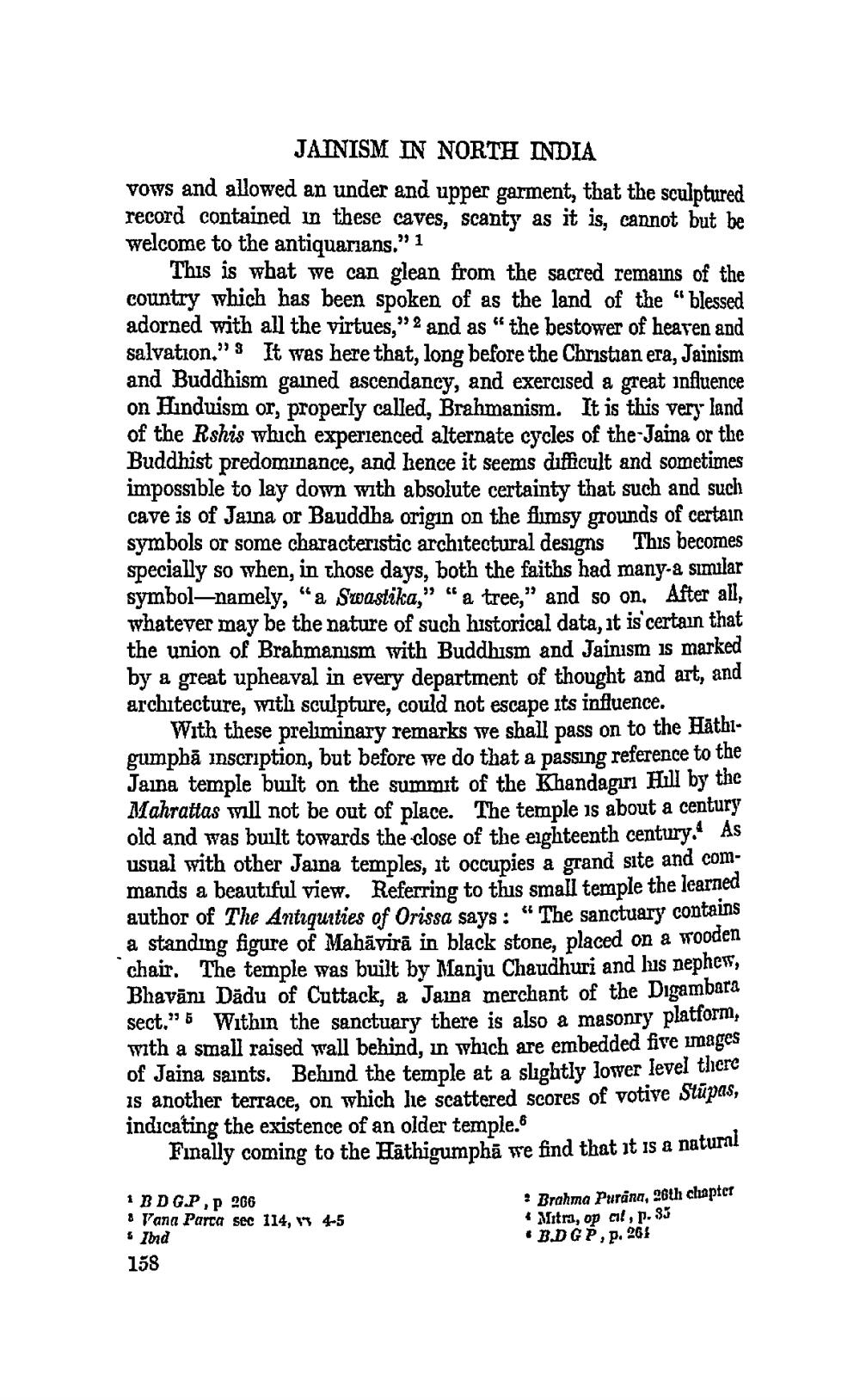________________ JAINISM IN NORTH INDIA vows and allowed an under and upper garment, that the sculptured record contained in these caves, scanty as it is, cannot but be welcome to the antiquarians." 1 This is what we can glean from the sacred remains of the country which has been spoken of as the land of the "blessed adorned with all the virtues," 2 and as "the bestower of heaven and salvation." It was here that, long before the Christian era, Jainism and Buddhism gained ascendancy, and exercised a great influence on Hinduism or, properly called, Brahmanism. It is this very land of the Rshis which experienced alternate cycles of the Jains or the Buddhist predominance, and hence it seems difficult and sometimes impossible to lay down with absolute certainty that such and such cave is of Jaina or Bauddha origin on the flimsy grounds of certain symbols or some characteristic architectural designs Thrs becomes specially so when, in those days, both the faiths had many-& similar symbol-namely, "a Swastika," "a tree," and so on. After all, whatever may be the nature of such historical data, it is certain that the union of Brahmanism with Buddhism and Jainism is marked by a great upheaval in every department of thought and art, and architecture, with sculpture, could not escape its influence. With these preliminary remarks we shall pass on to the Hathigumpha inscription, but before we do that a passing reference to the Jaina temple built on the summit of the Khandagiri Hill by the Mahrattas will not be out of place. The temple is about a century old and was built towards the close of the eighteenth century. As usual with other Jaina temples, It occupies a grand site and commands a beautiful view. Referring to this small temple the learned author of The Antiquities of Orissa says: "The sanctuary contains a standing figure of Malavira in black stone, placed on a wooden chair. The temple was built by Manju Chaudhuri and his nephew, Bhavani Dadu of Cuttack, a Jaina merchant of the Digambara sect." 3 Within the sanctuary there is also a masonry platform, with a small raised wall behind, in which are embedded five images of Jaina saints. Behind the temple at a slightly lower level there is another terrace, on which lie scattered scores of votive Stupas, indicating the existence of an older temple. Finally coming to the Hathigumpha we find that it is a natural slightly lower level the Which lie scattes 4-5 1 BDG. PP 206 : Vana Parca sec 114, Ind 158 ? Brahma Purana, 26th cluapter * Mitra, op al, p.35 * B.DGP, p. 261




